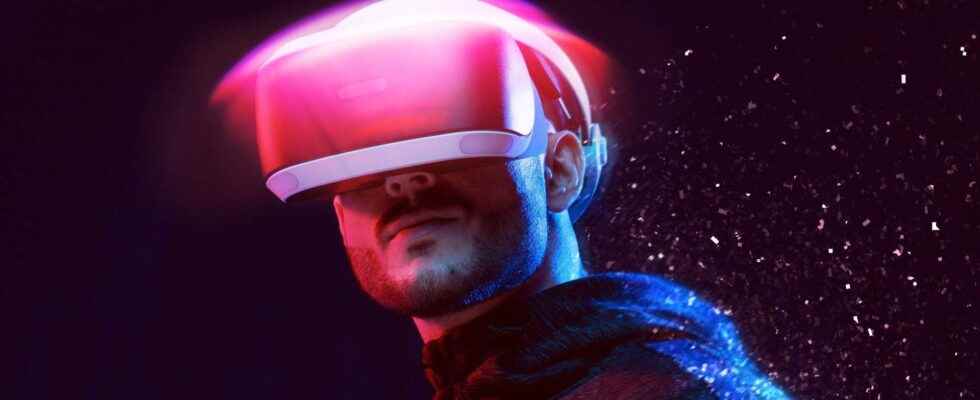A virtual reality headset is a portable electronic device that allows you to immerse yourself in a virtual world. Worn on the head, it provides access to a 3D space. For this, it has a stereoscopic screen providing an image for each eye (sometimes a single monoscopic screen), stereo sound, various sensors, gyroscopes and accelerometers. A pair of controllers is often supplied with a VR headset.
There are 3 types of headsets: headsets connected to a computer or a game console, stand-alone headsets and headsets using a smartphone. The former are more powerful and more expensive, those using a smartphone are the cheapest, but also those providing the least interesting experience.
The first ones virtual reality headsets appeared in the early 1990s, but it is the brand Oculus in 2012 which really revolutionized the VR market (Virtual reality). Since then, several brands have released virtual reality headsets, the main brands being Oculus and HTC in partnership with Valve. The applications of virtual reality are very numerous: professional training, medical treatment of certain phobias, scientific visualization, architecture, virtual tours, artistic creations, etc. However, it is through video games that this technology has conquered the general public.
What is a virtual reality headset used for?
The purpose of a VR headset is to offer its user a sensory experience in a virtual world in which we can move, interact with objects and communicate with other humans. It can be used for:
- play a VR game;
- see a film in a way similar to the experience produced in a cinema;
- watch videos shot in virtual reality (fiction, documentary);
- organize a meeting ;
- visit a remote location, such as a museum;
- view live video transmitted by another device, such as a drone ;
- study in a more immersive way;
- train thanks to simulation (aviation, medicine, army);
- travel virtually, especially for people who cannot travel.
How does a virtual reality headset work?
A helmet of virtual reality includes several elements to best simulate the human experience of reality, whether visually or audibly.
The image
Visually, virtual reality is determined by the field of view and the frame rate. The human field of view is around 220 ° and VR headsets try to approach it to simulate as well as possible human vision. The best today reach 210 °, but most VR headsets have a field of view of around 110 °. The human eye does not really see in terms of independent images. A high frame rate, however, makes the immersion more enjoyable and the images smoother. Today, headphones have a frame rate of 60 to 120 fps.
The definition of the screen and its refresh rate are also important. The definition must be high enough to have a perfectly sharp image. It varies between 1,440 × 1,440 px and 3,840 × 2,160 px. The refresh rate determines how often a headset can display images, 90 Hz being the minimum required.
Audio
Audio is one of the most underrated elements of virtual reality. However, 360 ° spatial audio is essential to feel completely immersed, because it allows you to perceive where the sounds around you are coming from.
Position and movement tracking
We really feel in another world when you can move around and look around. Depending on the headset, the head and body tracking functions differ. The best helmets allow you not only to look around you, but to move around physically in a small space, usually thanks to sensors positioned in the room.
You will also be interested
[EN VIDÉO] Visit the supermassive black hole in the heart of the Milky Way in virtual reality Exploring the heart of our galaxy as if you were there is now possible thanks to a new VR experience combining the cutting edge of astronomical observation and computing.
Interested in what you just read?
.
fs2
